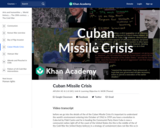
The Cuban Missile Crisis. Created by Sal Khan.
- Subject:
- History
- Material Type:
- Lesson
- Provider:
- Khan Academy
- Provider Set:
- Khan Academy
- Author:
- Sal Khan
- Date Added:
- 07/26/2021

The Cuban Missile Crisis. Created by Sal Khan.
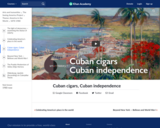
Willard Metcalf, Havana Harbor, 1902, oil on canvas, 46.5 x 66.4 cm (Terra Foundation for American Art, Daniel J. Terra Collection, 1992.49), a Seeing America video Speakers: Dr. Katherine Bourguignon, Curator, Terra Foundation for American Art, and Dr. Steven Zucker. Created by Beth Harris, Smarthistory, and Steven Zucker. Find learning related resources here: https://smarthistory.org/seeing-america-2/
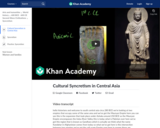
In the third century BCE, between the Greek-influenced Seleucid Empire and the Indian Mauryan Empire lay a small and prosperous kingdom called Bactria. This video is about cultural syncretism—the blending of cultures. What kinds of culture emerges at the crossroads of empire? Let's find out together, as we learn about Greco-Buddhism and Nestorian Christianity.
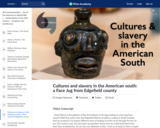
A conversation with Sarah Alvarez, Director of School Programs, Art Institute of Chicago, Beth Harris, and Steven Zucker in front of a Face Jug from Edgefield county, South Carolina, c. 1860, stoneware and alkaline glaze, 13.3 cm high (The Art Institute of Chicago 2006.84) A Seeing America video. Created by Smarthistory.
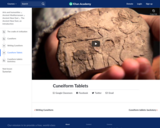
Near Eastern Languages and Cultures graduate student Sara Brumfield recounts her experience working at the UCLA Library's Center for Primary Research and Training, where she described and translated two collections of cuneiform tablets. Created by Beth Harris and Steven Zucker.

More analysis of the cupcake business. Click here to download "Sal's Cupcake Factory" spreadsheet.. Created by Sal Khan.

Using our spreadsheet to show why prices decrease when utilization is low and prices increase when utilization is high. Click here to download the spreadsheets used in this video.. Created by Sal Khan.

Currency Effect on Trade. Created by Sal Khan.

Currency Effect on Trade Review. Created by Sal Khan.

If you track the value of a currency, you'll notice its value fluctuates. In this video, we introduce to how exchange rates can fluctuate. Created by Sal Khan.

If you track the value of a currency, you'll notice its value fluctuates. In this video, we introduce to how exchange rates can fluctuate. Created by Sal Khan.

Data on Chinese / U.S. balance of payments. [Economics playlist: Lesson 17 of 20]

The positive sign for current corresponds to the direction a positive charge would move. In metal wires, current is carried by negatively charged electrons, so the positive current arrow points in the opposite direction the electrons move. This has been the sign convention for 270 years, ever since Ben Franklin named electric charges with + and - signs. This convention came about 150 years before the discovery of the electron. Created by Willy McAllister.

Find the current due to closing a switch using equivalent resistance and Ohm's law.

How to calculate the current through a resistor in parallel using equivalent resistance and Ohm's law.
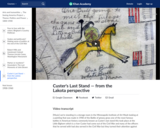
What most American students learn about as Custer's Last Stand was the last great victory for the Lakota people. Henry Oscar One Bull/Tȟatȟáŋka Waŋžíla (Hunkpapa Lakota), Custer's War, c. 1900, 39 x 69 inches (irregular), pigments, ink on muslin (Minneapolis Institute of Art) A Seeing America video Speakers: Dr. Jill Ahlberg Yohe, Associate Curator of Native American Art, Minneapolis Institute of Art and Dr. Steven Zucker. Created by Beth Harris and Steven Zucker. Find learning related resources here: https://smarthistory.org/seeing-america-2/

Google Security Princess Parisa Tabriz and Jenny Martin from Symantec introduce the most common types of cybercrime, including viruses, malware, DDOS attacks and phishing scams.
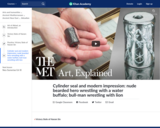
Met curator Yelena Rakic on reading into Cylinder seal and modern impression: nude bearded hero wrestling with a water buffalo; bull-man wrestling with lion from Mesopotamia, c. 2250–2150 B.C.E. . Created by The Metropolitan Museum of Art.
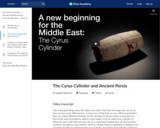
The Cyrus Cylinder is one of the most famous objects to have survived from the ancient world. It was inscribed in Babylonian cuneiform on the orders of Persian King Cyrus the Great (559-530 B.C.E.) after he captured Babylon in 539 B.C.E. It was found in Babylon in modern Iraq in 1879 during a British Museum excavation. Cyrus claims to have achieved this with the aid of Marduk, the god of Babylon. He then describes measures of relief he brought to the inhabitants of the city, and tells how he returned a number of images of gods, which Nabonidus had collected in Babylon, to their proper temples throughout Mesopotamia and western Iran. At the same time he arranged for the restoration of these temples, and organized the return to their homelands of a number of people who had been held in Babylonia by the Babylonian kings. Although the Jews are not mentioned in this document, their return to Palestine following their deportation by Nebuchadnezzar II, was part of this policy. The cylinder is often referred to as the first bill of human rights as it appears to encourage freedom of worship throughout the Persian Empire and to allow deported people to return to their homelands, but it in fact reflects a long tradition in Mesopotamia where, from as early as the third millennium B.C.E., kings began their reigns with declarations of reforms.
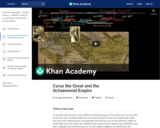
Cyrus the Great overthrows the Medians to establish the Achaemenid Empire (Persian Empire).